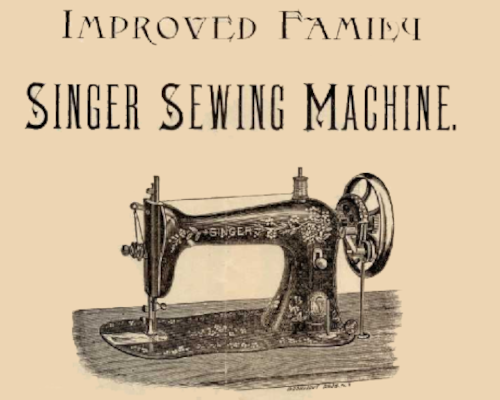
Philip H. Diehl invented a vertical oscillating shuttle for Singer in the late 1870s, and this was the basis of the Singer 15 class with the introduction of the 15-1 (AKA Improved Family) in 1879 as well as a number of industrial models—specifically the 17 and 18 class for shoe making as well as some early 15 and 16 subclasses for specific garment industry applications. This type of shuttle is called an oscillating shuttle in early catalogues and generally referred to as a "long beak" by collectors so as to avoid confusion with the horizontal oscillating hook used in the 66 and 99 class.
Of all the Singer models, there is probably far more variety in the 15 class than any other; I have counted over 100 different submodels (mostly based on the ISMACS comprehensive model list, but I have built upon it using my own research). Contrary to common belief that the 15 class was primarily a domestic (family use) machine, most 15 class submodels were designed for specific industrial applications and even include chain stitch models. Below are images from a 1896 Singer catalogue of commercial manufacturing models in production at Singer Elizabethport (USA).
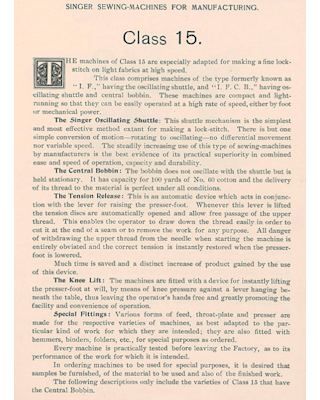
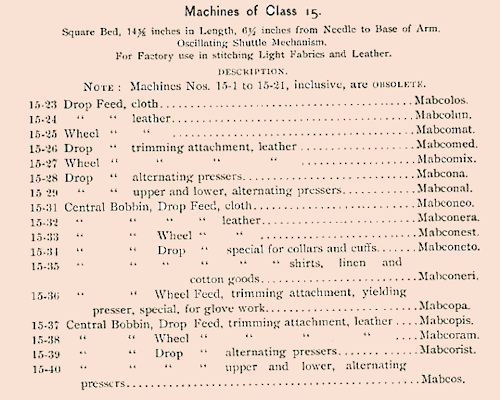
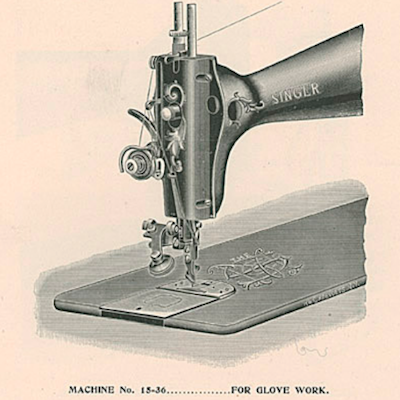
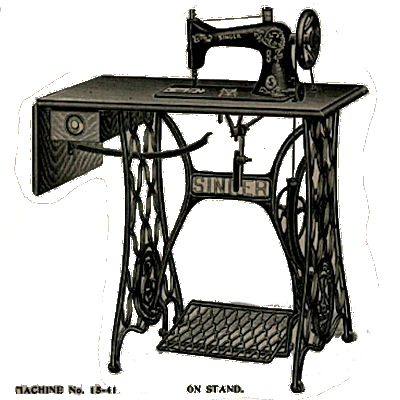
Descriptions of a few Kilbowie 15 class "manufacturing" submodels circa 1906-8
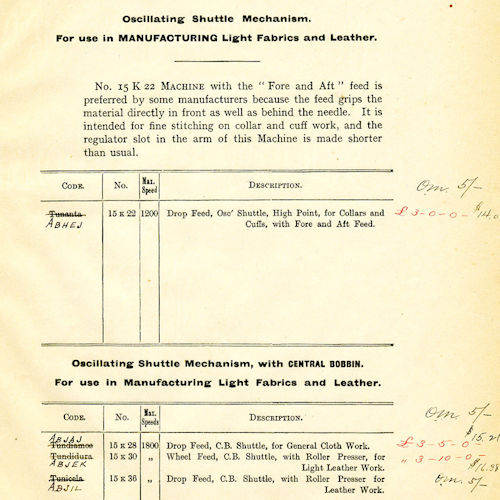
When identifying a submodel, it should be noted that model designations were usually specific to the factory that produced them. In this article I will concentrate on the main domestic incarnations you are most likely to encounter in Australia
|
|
15-1 introduced in 1879Notable for its distinctive fiddle or serpentine bed and long beak
shuttle, this model had a very primitive tension with a screw in stud
and no tension release. The 15-1 was slowly superseded by a number of
intermediate models in the 1890s with the familiar 370mm × 178mm bed
and a 1 o’clock bobbin case. There is evidence that Singer stole
the design for this fingered bobbin case vertical oscillating shuttle
from Dürkopp but the records are rather murky on the matter. Regardless
of who designed it, this case would come to be generically known as
a "15 class" in the 20th century.
|
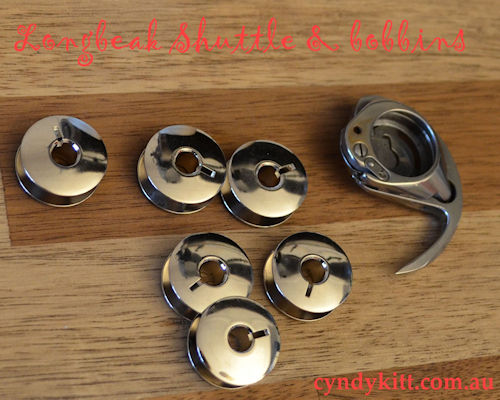 |
New parts (and complications)Bobbins (Singer part # 2073) and shuttles (Singer part # 6028) are still available thanks to the long-beak continuing to be used in industrial machines used in the shoe making industry. Feet are low shank, and while technically any low shank domestic foot suitable for straight stitching will fit, there are feeding issues with hinged feet because of the feed dog design. This means that many modern feet, including clip shank, are not suitable so I recommend keeping an eye out for vintage feet. New throat and slide plates are not really available, but a new HA-1 slide can be cut to size.
Tension parts. Original is best as all parts of the 15-1 face plate and tension are obsolete or not quite as good as the original parts. However, the HA-1 tension nut and tension plates will work if the originals are lost and I find the #32575 check spring intended for the 66 class is a better match than any 15 class spring supplied to me. Balance Wheel etc.: as the end shaft of the machine is considerably longer than the later "standard" set by Singer, only original cranks and balance wheels are suitable. |
|
The 15-1 was slowly superseded by a number of intermediate models in the early 1890s with the familiar 370mm × 178mm bed and a bobbin case with the finger pointing to 1 o'clock which would over time become most closely associated with the Singer 15 class. The first Singer to feature a fingered bobbin case was the 15-11 circa 1892. There is evidence that Singer stole the design for this fingered bobbin case vertical oscillating shuttle from Dürkopp but the records are rather murky on the matter. Regardless of who designed it, this case would come to be generically known as a "15 class" in the 20th century, but I urge you to not fall into the trap of calling non-Singer central bobbin (CB) machines "clones" as (except for the bobbin, bobbin case and shuttle hook) there is some variation among these machines. |
|
 |
Singer continued to make rectangular bed "long beak" shuttle models of household use with the 15-22 (Elizabethport) and 15K1 though to 15K4 (Kilbowie) into the early 20th century. The Singer 15-22 had a wheel guard mounted winder and notension release. The 15K1 though to 15K4 had a pillar mounted winder, as I have not come across any in real life, I am uncertain about the tension. |
| As Singer's 17 and 18 class industrial shoe vamping machines continue to me manufactured by other companies in Asia, the shuttles and bobbins are still available. | |
|
|
|
|
|
New parts (and complications)Bobbins are standard CB
or 15 class Singer part # 2518 or
heavy duty CB Singer part # 2996 and
Feet are low shank, and while technically any low shank domestic foot suitable for straight stitching will fit, there are feeding issues with hinged feet because of the feed dog design. This means that many modern feet, including clip shank, are sometimes not suitable so I recommend keeping an eye out for vintage feet. Tension parts. Original is best as all parts of the face plate and tension are obsolete or not quite as good as the original parts. However, the HA-1 tension nut and tension plates will work if the originals are lost and I find the #32575 check spring intended for the 66 class is a better match than any 15 class spring supplied to me. Balance Wheel & Hand Crank: as the balance wheel shaft of many early model (pre WW1) is 10mm longer than the later "standard" used by Singer, only era and model correct original cranks and balance wheels are suitable.
|
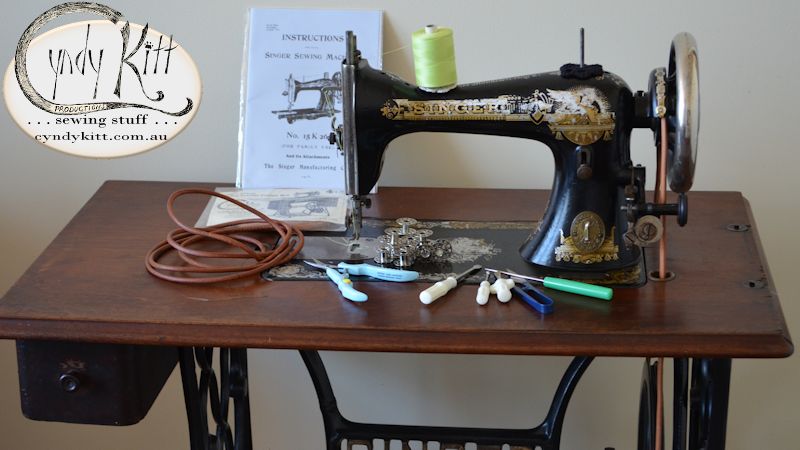 |
|
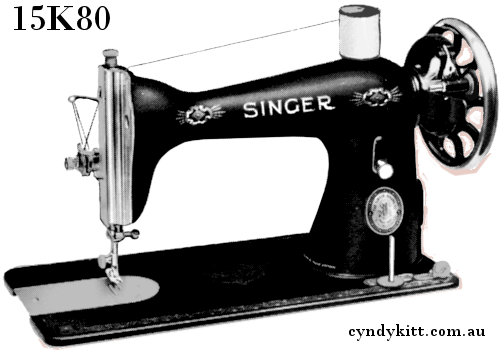 |
15K80 superseded the 15K26 in the late 1920s or early '30s (verification needed)15K80 Treadle
|
New parts (and complications)Bobbins are standard CB
or 15 class Singer part # 2518 or heavy duty CB Singer part # 2996 and
There are no "feed" issues with hinged feet. Most parts are available with few complications. New balance wheels and hand cranks are compatible.
|
|
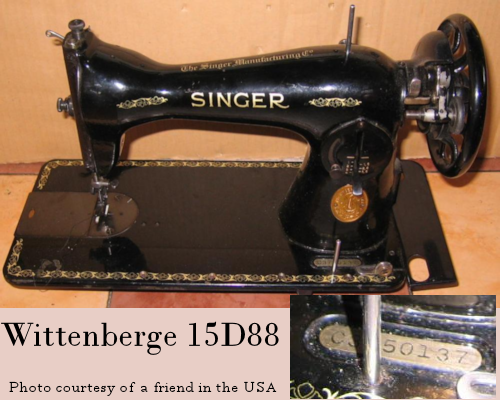 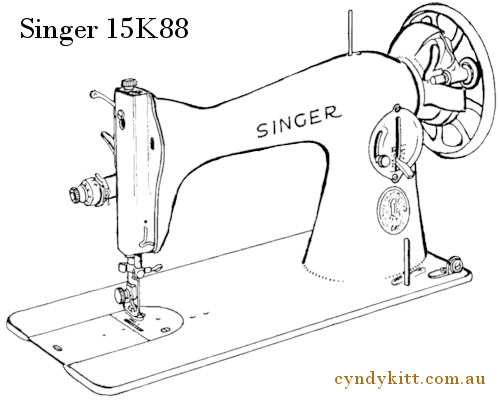 |
15D88, 15-88 and 15K88 and related submodels added a 3rd shuttle type to the Singer 15 "Household"class.The most common submodels in Australia are:
|
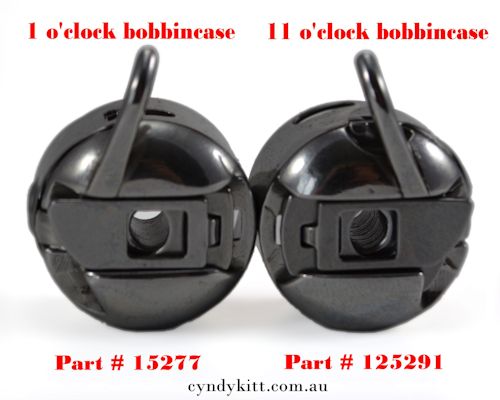 |
New parts (and complications)Bobbins are standard CB
or 15 class Singer part # 2518 or heavy duty CB Singer part # 2996 and
Tension parts, the spring is specific and a number of the parts are the same as the 201K. The needle clamp is also the same as the 201K There are no "feed" issues with hinged feet. Most parts are available with few complications. New balance wheels and hand cranks are compatible. |
|
There 15-75 and 15-125 are mechanically the same as the 15-88 and 15-91 respectively except with a different body shape (reminiscent to the 201K21). The Monza produced 15M75 is the only version I have seen in Australia.
|
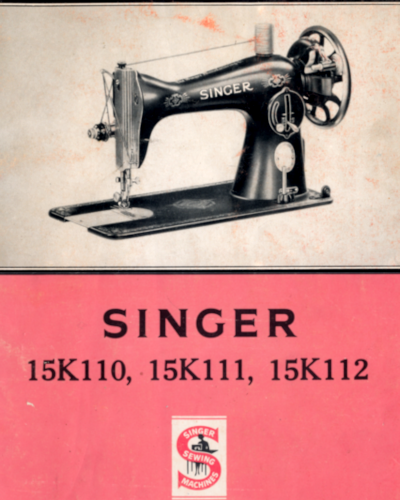 |
The Kilbowie factory’s last blast 15 model in the early 1960s, the 15K110 was a 1 o'clock BC model which adopted some of the innovations developed by Toyota, Brother and Janome in the early 1950s for their HA-1 Class models. After the Singer factories in the USA and Kilbowie stopped manufacturing any version of the 15 class, it continued to be made in Taiwan and later China for places where a simple mechanical machine which could be treadled or hand-cranked was preferable to an electric machine which could do a variety of stitches. Sadly the quality of the Chinese made machines dropped to match the price NGOs with the best of intentions are willing to pay and so while they are on occasion imported into Australia to be sold as "nostalgia" machines, they are really only suitable as décor. |
I use a ~ to denote the same submodel number was used for machines made to the same specifications.